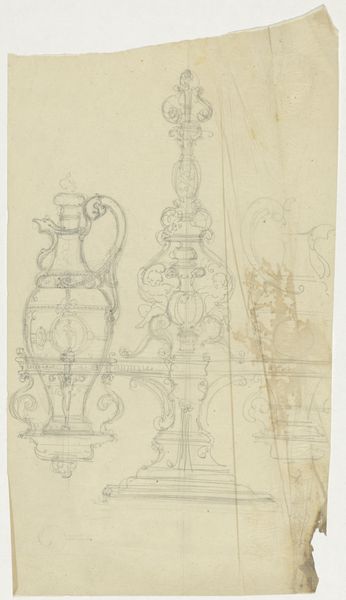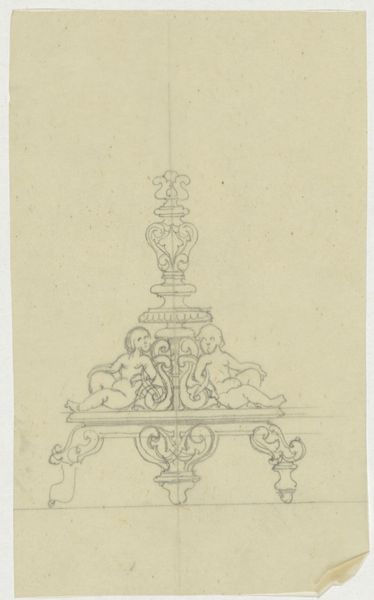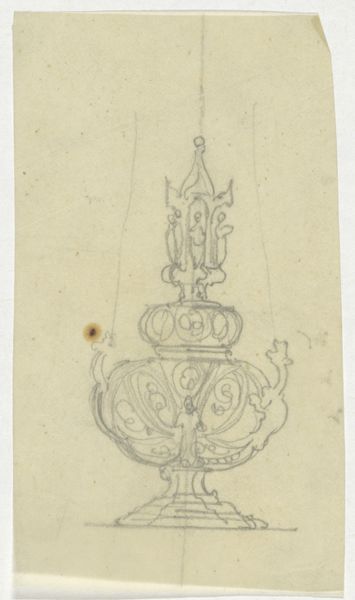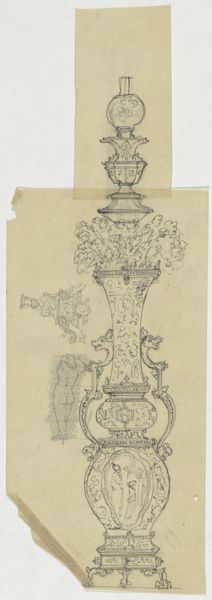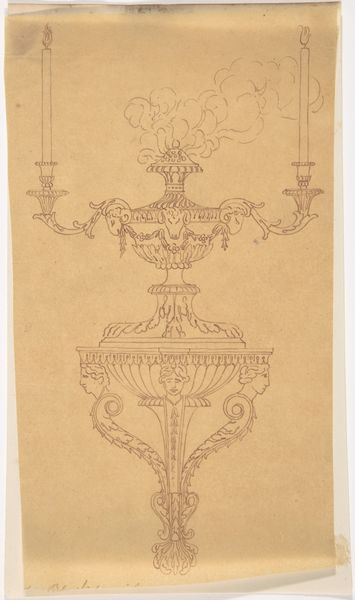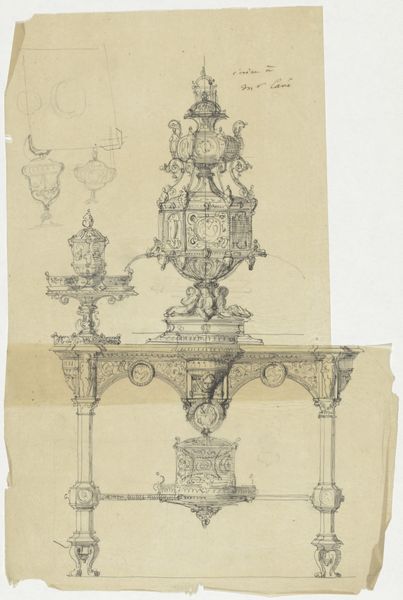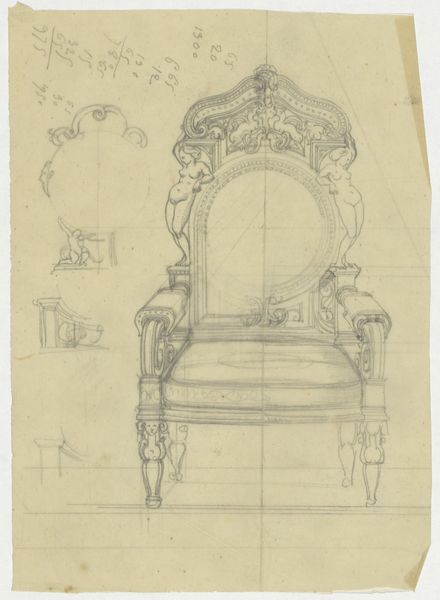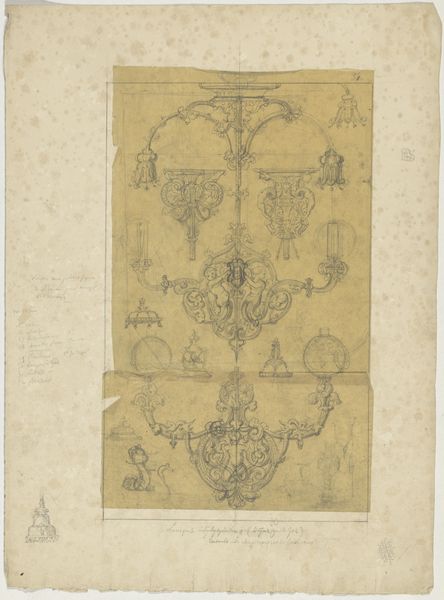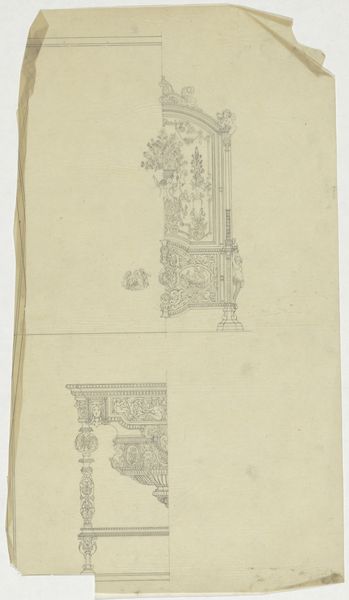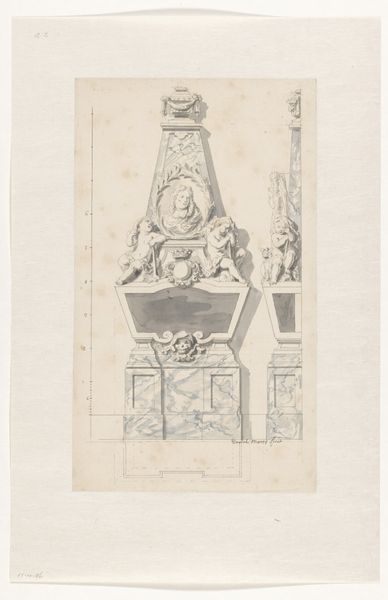
drawing, pencil
#
drawing
#
aged paper
#
toned paper
#
light pencil work
#
old engraving style
#
personal sketchbook
#
ink drawing experimentation
#
geometric
#
romanticism
#
pencil
#
sketchbook drawing
#
watercolour illustration
#
storyboard and sketchbook work
#
academic-art
#
sketchbook art
Dimensions: height 209 mm, width 261 mm
Copyright: Rijks Museum: Open Domain
Curator: This delicate pencil drawing, titled "Drie vazen" or "Three Vases", dates from sometime between 1830 and 1850 and is attributed to Firma Feuchère. The work utilizes both pencil and watercolor on toned paper. Editor: My first impression is one of tentative grandeur. The piece breathes refinement, despite its sketch-like state. It's intriguing how the aged paper elevates the forms—each vase poised with an inherent aristocracy. Curator: Indeed. Firma Feuchère was renowned for elaborate designs, and here, even in sketch form, you sense a reaching for status. The vases, despite being inanimate objects, communicate power and societal position. This was an era fascinated by classical forms, associating them with lineage and high culture. Editor: I'm fascinated by the geometry and structure within what might seem, at first glance, simply decorative forms. Look at the contrast between the slender, tapering bodies of the flanking vases against the robust, tiered structure of the one in the middle. Semiotically, this suggests different tiers of formality and opulence. Curator: It speaks, too, of memory. These forms aren’t arbitrary; they recall specific periods of classicism but with the flair of the Romantic era’s interest in history, reinterpreted through a 19th-century lens. Each vase seems a carefully chosen vessel—no pun intended—for holding and conveying status. Editor: Yes, I appreciate how the tonal variations articulate spatial depth even though the paper is largely flat, making me acutely aware of line and shade. There is so much to enjoy from simply assessing form and relation here. Curator: Perhaps that is precisely what Feuchère intended. In essence, a study that acts like a symbol itself: the symbolism is not necessarily in a narrative scene, but in the shape, arrangement, and historical echo of luxury itself. Editor: I see that now—a distillation of opulence explored through form. Thanks, that changes how I perceive this simple study; more a blueprint of aspiration and an early exploration in taste-making than a quaint illustration.
Comments
No comments
Be the first to comment and join the conversation on the ultimate creative platform.
